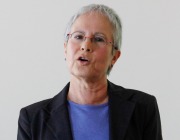S Bendjaballah, Doron, E, Lowenstamm, J, ו Ouhalla, J. 2012.
“Editors' Note”. Brill's Journal Of Afroasiatic Languages And Linguistics, 4, 1, Pp. 1. doi:10.1163/18776930-00400012.
For over a millennium, until about the 8th century AD, Aramaic (Semitic) was the lingua franca of the Middle-East. It was then replaced by Arabic throughout most of the region. Yet Neo-Aramaic is still spoken today in some areas. We discuss the North-Eastern Neo-Aramaic group of dialects (NENA), which contains over a hundred dialects spoken by Jewish and Christian communities originating in villages and towns in western Iran, southeastern Turkey and northern Iraq east of the Tigris river (Khan 2007). We argue that NENA is an ergative language, the only ergative language in the Semitic family. Ergativity in NENA has the following characteristics, which are quite common among ergative languages: it is split ergativity (only attested in the perfective aspect) and it is marked by verbal agreement affixes rather than by Case. Adapted from the source document
The paper offers a theoretical characterization of the middle Voice as distinct from the passive Voice, and addresses the cross-linguistic morphological variation in realizing these two non-active Voices in different classes of languages, represented by Hebrew, Greek and English. The two non-active Voices are the morphological realization of two distinct syntactic Voice heads generating middle and passive clauses respectively. The former are cross-linguistically interpreted as (i) anticausative, (ii) reflexive (and reciprocal), (iii) dispositional middle, and (iv) medio-passive, which is distinct from passive. This variation in the interpretation of the middle Voice reflects different properties of the root rather than the application of four different lexical rules postulated by lexicalist theories. [PUBLICATION ABSTRACT]

